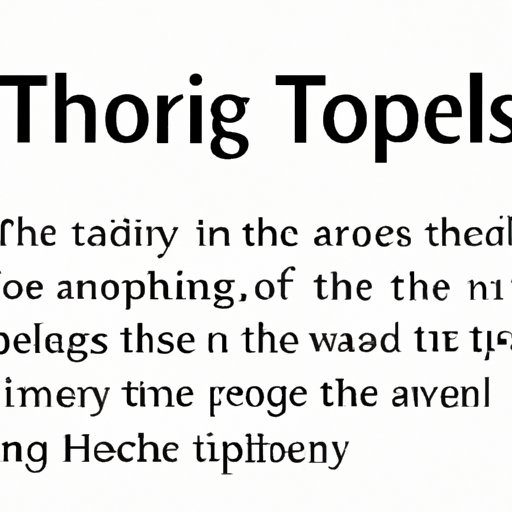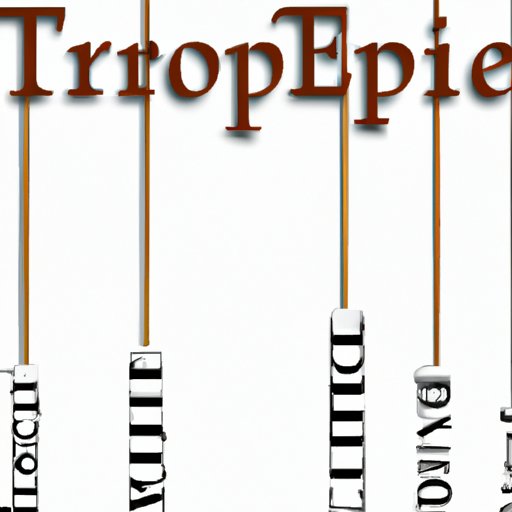Introduction
A trope is a figurative or metaphorical device used by authors to evoke certain emotions from their readers. It is often used to convey a particular message or idea in a creative way. In literature, tropes are used as literary devices to add depth and meaning to a story or poem. They can also be used to create unique and memorable characters.
The term “trope” comes from the Greek word tropos, which means “turn” or “change.” This refers to the ability of tropes to change the meaning of a text, making it more powerful and effective. Common examples of tropes include metaphors, similes, irony, allegory, and personification. These devices can be used to make a story more vivid, exciting, and memorable.

A Deeper Look into the Use of Tropes in Fiction Writing
Analyzing common literary tropes used by authors can help us better understand how tropes can be used to create unique and memorable characters. For example, one of the most commonly used tropes is the “hero’s journey”, which is a narrative structure that follows a protagonist who embarks on a quest and overcomes obstacles to reach their goal. This type of trope is often used to create compelling protagonists that readers can easily identify with.
Another common trope is the “unreliable narrator”, which is a character whose perspective is not completely trustworthy. This type of trope can be used to add suspense and mystery to a story, as the reader is left to question the truth behind the narrator’s words.
Exploring different types of tropes found in literature can help authors understand how they can use these devices to create powerful and meaningful stories. For example, the use of symbolism can be used to represent abstract ideas, while allusions can be used to reference other works of literature. Tropes like these can be used to create deeper connections between the reader and the text.
How Tropes Can Enhance Your Storytelling
The role of tropes in creating unique and memorable characters cannot be overstated. By using tropes, authors can add depth and complexity to their characters, making them more relatable and interesting. For example, the use of archetypal characters such as the hero, the villain, and the mentor can help create a story arc that is both engaging and emotionally resonant.
Examining how tropes impact the way we interpret literature can also be beneficial for authors. Tropes can be used to challenge readers’ preconceived notions about certain topics and themes. This can be done through the use of irony, satire, and allegory. For example, the use of irony in Mark Twain’s novel The Adventures of Huckleberry Finn encourages readers to consider the moral implications of racism and slavery in a new light.
Conclusion
Tropes are an essential tool for authors to tell stories in a unique and memorable way. By exploring different types of tropes found in literature, authors can gain a better understanding of how these devices can be used to create powerful and meaningful stories. The use of tropes can also enhance the storytelling process by adding depth and complexity to characters and challenging readers’ preconceived notions. Ultimately, the use of tropes can help authors create stories that are both engaging and emotionally resonant.
(Note: Is this article not meeting your expectations? Do you have knowledge or insights to share? Unlock new opportunities and expand your reach by joining our authors team. Click Registration to join us and share your expertise with our readers.)
